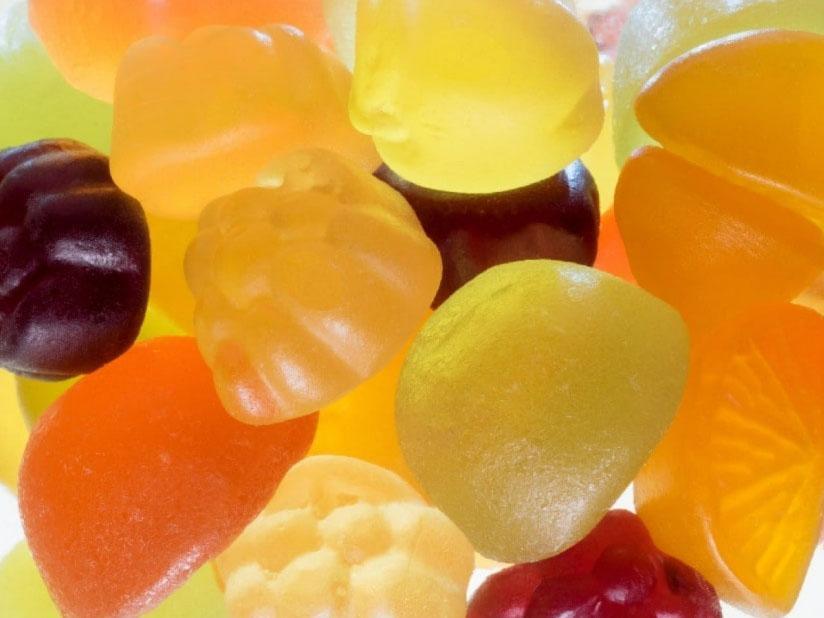Nine-year-old girl accidentally shares marijuana-laced sweets with friends at New Mexico school
Gummy candies containing tetrahydrocannabinol, prescribed to child's parents for medicinal purposes, sparks outbreak of giggling and dizziness among students who tried them

Your support helps us to tell the story
From reproductive rights to climate change to Big Tech, The Independent is on the ground when the story is developing. Whether it's investigating the financials of Elon Musk's pro-Trump PAC or producing our latest documentary, 'The A Word', which shines a light on the American women fighting for reproductive rights, we know how important it is to parse out the facts from the messaging.
At such a critical moment in US history, we need reporters on the ground. Your donation allows us to keep sending journalists to speak to both sides of the story.
The Independent is trusted by Americans across the entire political spectrum. And unlike many other quality news outlets, we choose not to lock Americans out of our reporting and analysis with paywalls. We believe quality journalism should be available to everyone, paid for by those who can afford it.
Your support makes all the difference.A nine-year-old student in New Mexico gave fellow students gummies - only to realise later they were not ordinary candies.
The candies had apparently been laced with tetrahydrocannabinol, or THC, the chemical responsible for how marijuana affects the brain, and were being used by the student's parents as medical marijuana. Kristi Del Curto, dean of elementary students at Albuquerque School of Excellence, told The Albuquerque Journal the fifth-grader brought the box of gummies she found at home and shared with friends at the school cafeteria one morning.
“She thought she was sharing candy, and if you saw the picture on the box, it did look like candy,” Del Curto told the paper.
The student later felt dizzy during class and was sent to the school nurse. After school officials determined the fifth-grader had eaten THC-laced gummies, students were asked over the school's public address system who else had the candies, the paper reported. Del Curto said five other students had gummies. Some did not seem to have been affected, and some others were “giggly,” she said. The student who brought the candies felt ill after eating five.
One student told KRQE News 13 she immediately realised they were not ordinary candies after she ate one and started feeling dizzy. Paramedics were later called to check on the students.
School officials informed parents of the incident, which happened a little more than a week ago, according to the school's Facebook page.
“We would like to remind all students and parents to be cautious about food/drink sharing... and we would like our community to be alert with drugs and any edibles that may or could be in different formats,” the school wrote. “We kindly ask our parents and community members not to talk explicitly about drugs/medicine when students are present.”
Twenty-nine states or territories, including the District of Columbia (DC), Guam and Puerto Rico, allow the use of marijuana for medical purposes. New Mexico became the 12th state to allow medical cannabis in 2007.
Eight states and DC have legalised recreational use of marijuana, but New Mexico is not one of them.
Edibles, or food products laced with cannabis extract, have become a popular way to sell marijuana, and many are sold online, though interstate transport is illegal. In Colorado, for example, edibles accounted for 45 percent of all cannabis sales, according to a paper published in the US National Library of Medicine.
Edibles come in different forms, such as candies, gummies, chocolates, baked goods and beverages. They are largely considered a safer way to consume marijuana because they do not pose the harmful risks of smoking, though little research is available on how effective edibles are compared with other methods of ingestion. Edible products also account for majority of hospital visits, likely because users who do not realise the delayed effects consume higher-than-recommended amounts, the paper says.
Del Curto told local media the gummies came in a box labelled “Incredibles.” The company's website says it sells different flavours of THC gummy candies. Recreational ones contain 100 milligrams of THC while medicinal ones have 300 milligrams.
The Washington Post
Join our commenting forum
Join thought-provoking conversations, follow other Independent readers and see their replies
Comments